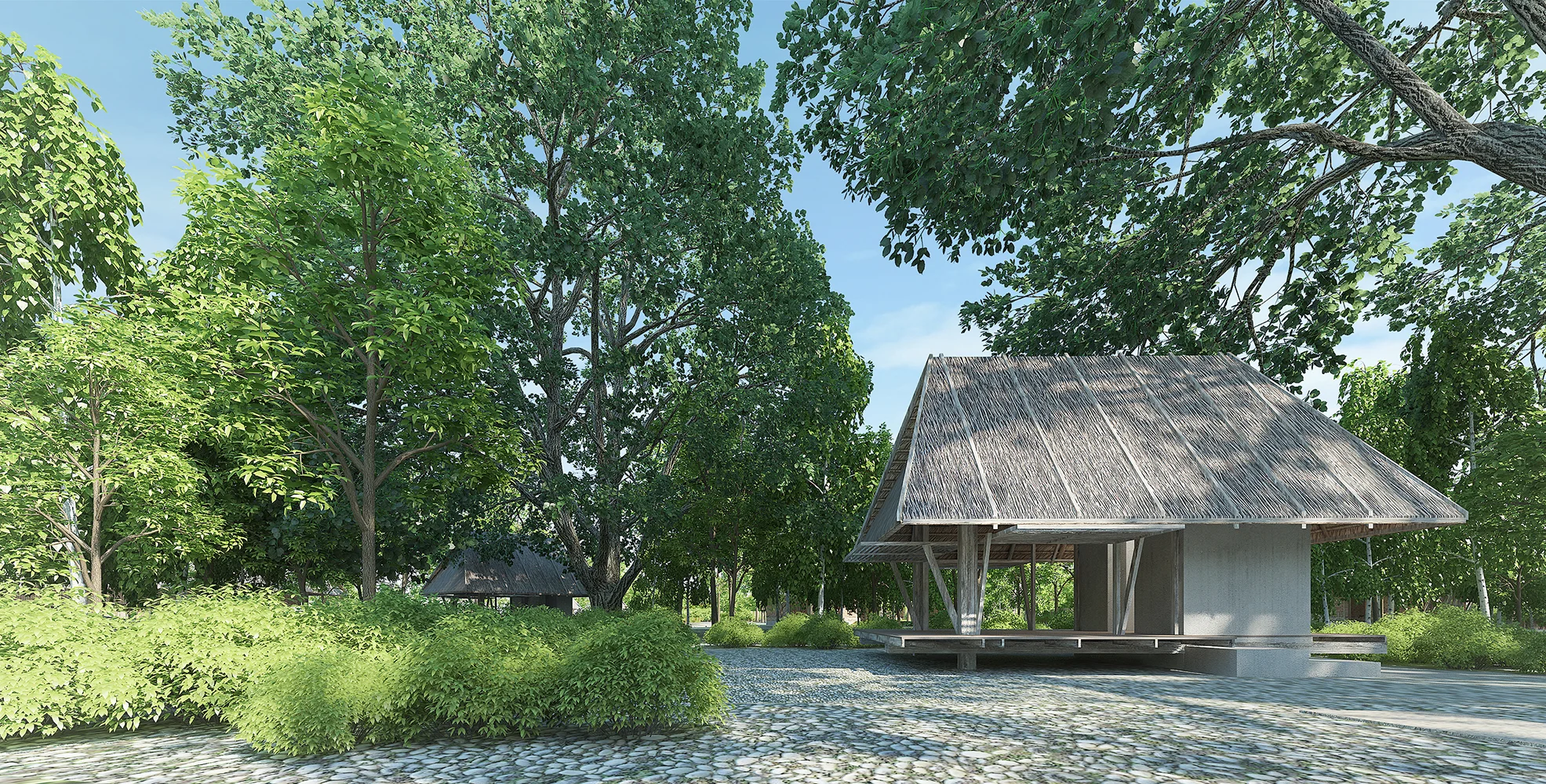Buddhist Health Practice Community
Location: Lopburi, Thailand
Client: Siripoj Pookcharoen
Year: 2015-2017
Status: Pending
Program: Medical Community, Masterplan / 35,000m²
Roles: Master Planning and Architect
Collaborators:
Landscape Architect: Phatchra Khongsuphol, Mingkwan Nantavisai, Weerada Wongtanakornchai
Following Eastern and Buddhist method of medication, the landscapes such as therapeutic gardens, healing gardens and sensory stimulation plants evoke serenity, tranquility and play pivotal roles in treating people suffering from severe sickness. Combining the knowledge of landscape with architectural design by using local natural resources helps benefit patient health and creates sustainability in the community.
The Buddhist Health Practice Community ideally supports up to two hundred patients including Buddhist monks, chronic-pain patients, volunteers or even general public individuals interested in this medical knowledge. The design team proposes to separate the area into 4 parts using consumers’ criteria.
30% of the area is rice paddies.
25% of the area is forest and other agricultural lands.
30% of the area provides water resource which is the life line of the community.
15% of the area is residential area.
These divisions of landuse impose a sense of self-sufficiency by not relying on products from industrial markets.
Architectural design is based on sustainability, sufficiency and concept of vernacular architecture. The design team believes in a simple life. Therefore, local materials and construction techniques are used as a fundamental solution. Hand-made techniques like natural soil bricks, recycled and re-purposed timber structures and local thatched roofs can be used for building detail and construction. Because construction process is so simple, everyone can participate in this process.






